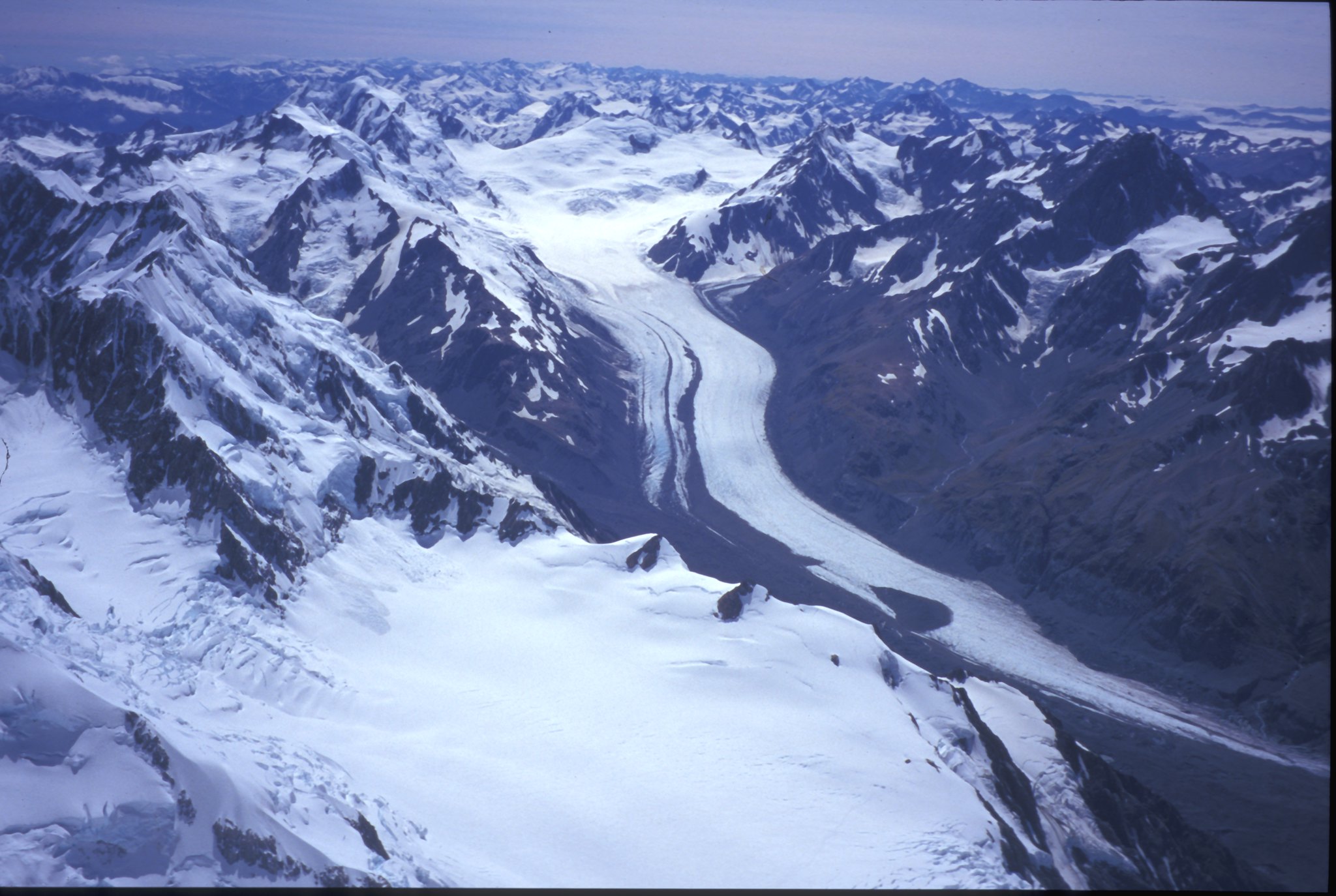Climate change could halve the area covered by glaciers outside the Antarctic and Greenland ice sheets by the end of the century, according to international research.
Authors of the study say these “de-glaciated” areas should still be protected, as they could provide habitats for other species displaced from their own home ranges due to warmer weather.
The authors predict de-glaciated areas in New Zealand might not be extremely cold or harsh, which could see us lose species that thrive in the cold, but could also create a new environment for another type of ecosystem to flourish.
The SMC asked experts to comment on the research and explain what it means in a New Zealand context.
Professor Rewi Newnham, School of Science in Society, Te Herenga Waka, Victoria University of Wellington, comments:
“New Zealand’s disappearing glaciers are widely appreciated, culturally and aesthetically, but they also carry great economic value, as a prime tourist attraction, in fuelling much of our envied hydroelectricity capacity, and as a source of irrigation and freshwater generally.
“This publication, although global in scope, raises some other important consequences of disappearing glaciers that are not so widely appreciated in New Zealand and yet are especially relevant here.
“In particular, the emergence of new ecosystems in these deglaciated valleys, could play out very differently in our unusual southern mid-latitude context such as comparatively rapid forest expansion as opposed to providing new refugia for endangered cold-adapted alpine species.
“Another prospect for New Zealand (not highlighted in the paper) however is the opportunity these new habitats will present to invasive species that can spread faster than native forest species, aided by warming climates and inadvertent human activity. Our glaciers, even in retreat, continue to attract tourists, for example, who themselves – and the infrastructure supporting this activity – can be vectors for further enabling the invasives to spread.
“All the more reason to champion the protection of these fast emerging new ecosystems before it is too late.”
No conflict of interest.
Associate Professor Heather Purdie, School of Earth & Environment, University of Canterbury, comments:
“This is an interesting contribution that explores how areas, which are currently occupied by glaciers, may adjust in future as glaciers continue to shrink.
“We know that New Zealand glaciers are very sensitive to changes in temperature, and we have already witnessed dramatic changes to ice volume over the last decade.
“Already in some locations we see lakes growing in places where glacier ice used to be, while in other places, shrinking glacial ice has left behind valleys full of loose, unstable rock.
“Habitat expansion is already occurring; just last year I came across a species of native freshwater fish in the Tasman Glacier Lake, a species previously found further down-valley in Lake Pukaki. As proglacial lakes expand and warm up, we should expect to see more and different species adapting to these new habitats.
“In New Zealand, our relatively warm maritime climate means that the rate of landscape adjustment can be quite rapid. For example, we already see a range of plants and their associated invertebrate communities becoming established in the Fox and Franz Josef Glacier valleys as these glaciers have shrunk.
“Of course as the authors of this research highlight, this change is not just about expansion of new ecosystems, but highly specialised species could become threatened as their icy habitats disappear. And we may not even know what we will lose. Only earlier this year a study was released that identified new previously unidentified species of tardigrada (invertebrates commonly known as “water bears”) living on some glaciers in the Southern Alps.
“Unlike some other countries around the world, we are fortunate here in New Zealand in that 96% of our glacial areas are in locations that do have some form of environmental protection, like for example, National Parks. But this does not mean we can be complacent.
“A key uncertainty when thinking about glacial recession and ecosystem adjustment, is just which emissions pathway human society will take? And this depends on how proactive we are at reducing our greenhouse gas emissions. This study is yet another example of why we cannot afford to delay making changes to the way we live on Earth, we need to act now to minimise climate warming.”
No conflict of interest.
Dr Marcus Vandergoes, Paleontology Team Leader and Paleoecologist, GNS, comments:
“This paper is a timely global summary of one of the ‘new’ ecological spaces that will be created as glaciers retreat over coming decades as climate warms. Closer to home, we know glacial retreat is already underway in New Zealand, shown by nearly 50 years of NIWA’s end-of-summer snowline survey. We can get glimpses of how fast plants will move into these spaces, and wider ecological changes, by studying responses to past glacial and climate changes. Of course, we also know that vegetation change and succession will be different to past changes: this time the native biota will also be competing with a range of introduced, non-native, plants and animals.”
No conflict of interest declared.
